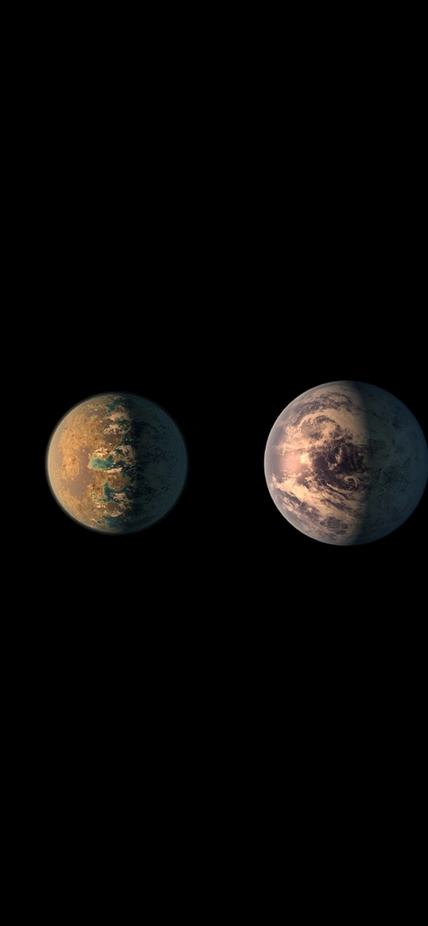Five astronomers have won three Carnegie Science Venture Grants in the past year. Carnegie Science Venture Grants bring together researchers from different backgrounds to tackle new questions that cross traditional disciplinary boundaries. Andrew McWilliam and Johanna Teske are collaborating on a novel approach detect exoplanet atmospheric gases, including molecules important for life. Nick Konidaris is collaborating with colleagues from Carnegie’s Department of Global Ecology to develop instrumentation that will measure photosynthesis at planetary scales. Juna Kollmeier and Guillermo Blanc are collaborating on new ways to extract new information from the large and complex data sets that have become standard in modern astrophysics.
Each grant provides $100,000 for these interdisciplinary projects that are likely to grow in unexpected ways. They are generously supported, in part, by trustee Michael Wilson and his wife, Jane, and by the Monell Foundation.
“I am excited that Carnegie offers these kinds of opportunities for creative approaches to questions that span our scientific disciplines,” said Observatories Director, John Mulchaey.
Detecting Exoplanet Atmospheres
Astronomer Andrew McWilliam of the Observatories has teamed up with postdoctoral fellow Johanna Teske of Observatories and the Department of Terrestrial Magnetism to develop a novel technique for detecting the atmospheres of Earth-sized exoplanets, including looking for the molecules that are important to the emergence of life.
A priority target is the TRAPPIST-1 system, with seven Earth-sized planets roughly 40 light-years away, making it a “nearby neighbor’’ to the Sun. They will analyze the light transmitted through the exoplanetary atmospheres as the planets move in front of their host stars, searching for the faint molecular fingerprints of water, carbon dioxide, oxygen and methane buried in the bright light of the host star. The TRAPPIST-1 system is particularly interesting because three of the planets are just the right temperature to have liquid water on their surfaces. However, it’s also particularly challenging because the star is so cool that it also has water in its atmosphere. This is where the Venture Grant will help—higher-resolution observations will tease apart the difference light from stars and from planets.
The researchers will work with the Observatories’ world-class instrumentation team to adapt a new, high-resolution near-infrared spectrograph from the University of Tokyo to be deployed on the Magellan-Clay telescope, and to develop custom reduction and analysis tools for exo-atmospheric detection.
Measuring Photosynthesis at Large Scales
A cross-disciplinary collaboration between an astronomer and several global ecologists will apply new developments in astronomical instrumentation to large-scale questions in ecology. Instrument designer Nick Konidaris of the Observatories and global ecologists Greg Asner, Joe Berry and Ari Kornfeld will be developing a high-precision instrument that will allow measurements of photosynthesis to be coupled with structural characteristics of plants to expand the existing leaf-level understanding of plant processes to the canopy and regional scale.
Measuring photosynthesis has applications from precision farming, to forestry, to understanding and predicting global climate change. But while leaf-level photosynthesis is fairly well understood, extending that knowledge to larger scales has been impeded by the complexity of canopies, as they are composed of millions of leaves on thousands of trees each responding independently to environmental variables such as light, temperature, humidity, and water availability. Without good measurements, scaling our leaf-level understanding to canopy- and regional- processes remains a fundamental challenge in ecological science.
Recent advances in optical remote sensing have opened a new possibility of measuring photosynthesis across all scales. Illuminated plants fluoresce light in proportion to the rate of photosynthesis. In the past few years, a method first developed by astronomers has been used to disentangle a faint fluorescence signal from the bright solar background. Konidaris will be working with the global ecologists to develop an instrument that applies these advances in astronomy to a device that will be integrated into the Carnegie Airborne Observatory (CAO). In complement with the sophisticated package of sensors currently on the CAO, these new tools will provide an unprecedented view of the canopy chemistry, structure, and function, while providing the foundation for a new understanding of photosynthesis at the landscape scale
Astrophysical Data Extraction
The Venture Grant awarded to Juna Kollmeier and Guillermo Blanc of the Observatories will allow them to collaborate with others to apply a new astronomical data-extraction technique to optical astronomy data sets that are currently inaccessible. The new techniques will allow superior visualization and analysis of distant astronomical objects.
For decades, astronomers have taken two-dimensional images through filters to try to understand what's going on inside galaxies, such as the ages of stars and whether they host black holes. But the image information is limited. To elucidate more-detailed information about galaxies, such as their motions, finer frequency information is needed.
The researchers will use new mathematical techniques to interrogate data from Integral Field Unit Spectrometers (IFU). These instruments take spectra at multiple locations within a target such as a distant galaxy. The "data cubes" from these instruments are extraordinarily rich and complex and the team will be applying algorithms developed in mathematics and computer science to extract features and remove noise from these astrophysical data.
The researchers learned of the method during a visit to the Scientific Computing and Imaging Institute (SCI) at the University of Utah, where Bei Wang Phillips and collaborator Paul Rosen have been working to analyze similar data cubes taken at radio frequencies with the ALMA telescope in Chile. They hope this is the beginning of an exciting joint venture with SCI on theoretical and observational data analysis.
